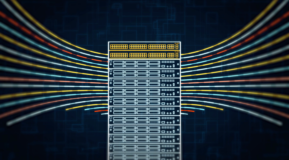Many people like to buy online, and pick up their purchase in the store. In fact, 57% of online shoppers said they had picked up an online order in a store, according to Digital Commerce. It's a great way to avoid shipping fees. It's convenient: You can place an order at lunchtime, and pick it up on your way home from work. It eliminates the worry about packages being stolen. And let's face it, it's gratifying to get your purchase the same day.
Wal-Mart, Home Depot, Target, Ikea, Nordstrom, Macy's and many other retailers offer in-store pickup for items ordered online. Click-and-collect is an increasingly popular service to offer. It actually can drive store traffic, when shoppers stop in and buy more items. And it can cut down on returns because customers see what they're picking up.
Addressing the Pain Points
But executing a great in-store pickup experience isn't always easy—for the customer or the associate. Customer expectations are high, and it's an entirely new process for associates. Retailers need an efficient way to capture customers' orders, make sure the inventory is available in the right store, pick and pack the order, and communicate with the customer.
At some retailers, pickers fan across store or warehouse with a list of items in no particular order. They zigzag to pick up a Google Home in aisle 20, two gallons of Horizon 2% organic milk in aisle 2, and a Star Wars Millennium Falcon in aisle 12. Other times, associates have a sorted list and a cart with totes for different orders. They scan the items, put them in the totes, and keep moving. That's more efficient.
But for too many retailers, click-and-collect is still hunt-and-seek. If retailers can increase the efficiency and accuracy of in-store pickup, more orders will be completed on time, customers will be happier, and in-store pickup revenues will continue to grow.
Let the App Do the Work
Mobile engagement technologies can help retailers deliver a better experience for shoppers eagerly waiting to pick up their online purchases. At the National Retail Federation show in January 2018, Aruba demonstrated a mobile app that takes the headaches out of click-and-collect.
The demo shows how associates can quickly and efficiently complete a customer order with the Aruba-created mobile app. Associates get turn-by-turn directions to pick the items using the most efficient path through the store or warehouse. They can verify that they're picking the correct items. If an item is not available on the shelf, they can message the team in the stockroom. Once the order is ready, the customer can be notified automatically through the app or via text message. Guest services can be notified when the customer pulls up into the parking lot and can ensure the order is ready. Associates can even find the location of other associates or a manager if they have questions. 
The solution we showed is based on Aruba Meridian for the click-and-collect app and Aruba Beacons in the wireless infrastructure. Meridian is the key to add location-awareness and other capabilities to an existing mobile app or to quickly create a new app. Meridian AppMaker adds turn-by-turn directions, asset tracking, and the ability to provide context-aware information to a mobile app.
Aruba Beacons power the indoor location and wayfinding, as well as the proximity-aware push notifications in the store. Beacons are small, low-power wireless transmitters that broadcast radio signals at regular intervals that can be heard and interpreted by iOS and Android devices equipped with Meridian-powered mobile apps. Many Aruba APs have built-in beacons that make is so a retailer can manage Aruba Beacons remotely.
Buy Online, Buy More In-Store
Some retailers have been slow to embrace click-and-collect because of concerns about missing out on impulse purchases if shoppers spend less time in the store. But the reality is that it's an omnichannel world, and by offering in-store pickup for online orders, retailers are adapting to new ways that customers want to buy.
Other technologies can be leveraged to entice shoppers to add more items to their shopping cart from the convenience of the couch. For example, some grocers are working with recipe sites to connect with customers who are planning meals by making it easy to add recipe ingredients to their carts. And with insights from data analytics, retailers can also make recommendations for new products for customers to try or offer coupons for different brands of favorite items.
Go Deeper
Learn more about Meridian mobile apps.
Learn more about Aruba Beacons.




